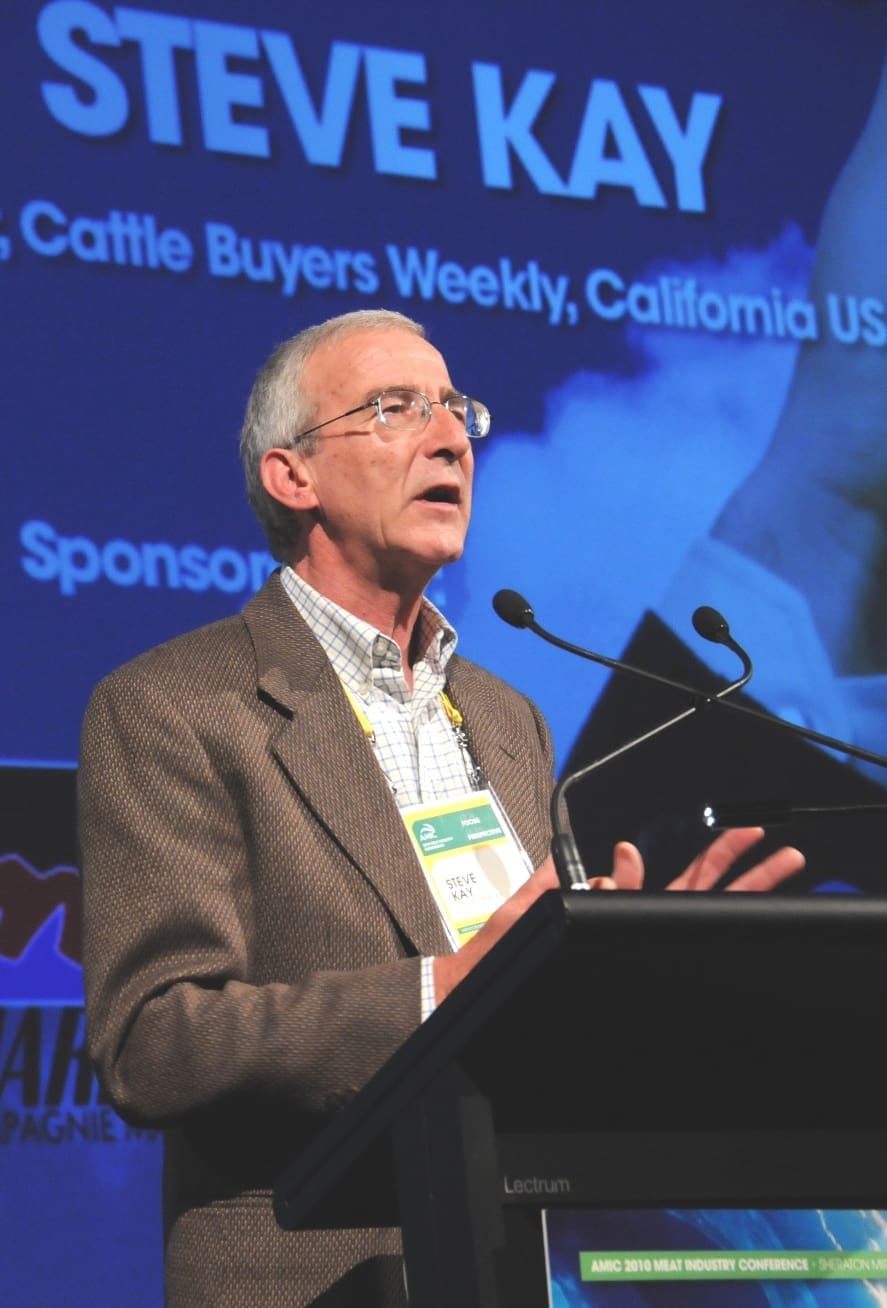 A monthly column written for Beef Central by US meat and livestock industry commentator Steve Kay, publisher of US Cattle Buyers’ Weekly
A monthly column written for Beef Central by US meat and livestock industry commentator Steve Kay, publisher of US Cattle Buyers’ Weekly
Misinformation and even disinformation is not new to the United States beef industry.
It’s fascinating, though, how the onset and impact of the coronavirus pandemic amplified the claims of critics of the industry, especially of the beef processing sector. Similar claims may be evident in Australia.
Most critics claim the “Big Four” US packers control more than 80 percent of the US beef supply and have increased their market share at the expense of producers. They also have claimed in the past year that the pandemic proved the industry does not have enough slaughter capacity. They argue that this will be rectified with the addition of new processing plants and the expansion of others.
If only any of this was correct.
The facts tell another story. The Big Four US packers (Tyson Foods, JBS USA, Cargill and National Beef Packing) do have an 81.7pc share of grainfed steer and heifer slaughter (my estimate*) for their 2020 share).
But steers and heifers do not account for all beef produced in the US. Cow and bull slaughter must be added. The result is that the four have a 69.8pc share of total commercial cattle slaughter, a far cry from +80pc.
That the market share of the major US packers keeps increasing is also a fallacy. Their share in 2020 declined from 2019.
The top three packers had a 2020 market share of total commercial cattle slaughter of 58.8pc, down from 60.4pc in 2019. Their share of steer and heifer slaughter declined to 67.7pc from 68.1pc in 2019. The top five packers’ share of commercial slaughter in 2020 was 75.7pc versus 76.1pc in 2019. Their share of steer and heifer slaughter was 84.3pc versus 83.8pc in 2019.
Meanwhile, daily slaughter capacity at the nation’s 30 largest beef processors increased slightly in 2021 from a year earlier. The Top 30 packers currently have the capacity to process 127,915 head per day in 55 plants. That’s 1820 head more than the total capacity of 126,095 head a year ago in 54 plants. The top five packers have a combined capacity of 97,500 head per day in 27 plants, the same as a year ago.
Add the capacity of another 38 small plants and you arrive at a US industry-wide maximum capacity of just over 133,000 head per days. Let’s assume all plants run at 95pc of capacity. That’s a daily slaughter total of 126,350 head. Yet there was scarcely a day in 2021 that the U&S daily kill exceeded 122,000 head. As I have written previously in this column, capacity is not the issue. A shortage of labor is.
Adding capacity
Meanwhile, there are eight proposed projects that would expand US slaughter capacity by 9100 head per day. Three involve expansions to existing plants and five involve new plants. This added capacity will come at the time when US cattle numbers might be at their lowest level in many years. As I see it, the timing of potential new entrants could not be worse.
Two prominent agricultural economists see it the same way. Increasing cattle slaughter capacity with additional smaller plants will have benefits for some producers and consumers, but it will not increase resilience in the supply chain overall, says University of Arkansas economist John Anderson, the lead author of a new paper published in December.
That is because smaller operations will primarily serve direct-to-consumer markets, which grew significantly during the pandemic, but remain a very small segment of the sector. The paper cautions against seeing new small plants as insulation against the next ‘black swan’ event, which is how the researchers describe the pandemic.
Noting the disruptions to plants because of the COVID pandemic, Anderson says he was a little surprised by how quickly the system got back to some semblance of normality. He thought the lag in production would be bigger and last longer.
But most facilities experienced, at most, four to six weeks of disruption. For larger packers that rely on economies of scale, the multi-million dollar question is how to reduce disruption from any future event, he says.
Another economist, speaking at the annual meeting of the National Association of Farm Broadcasting, echoed that sentiment.
You are eventually going to push more and more towards trying to figure out other ways besides labour, said Scott Brown of the University of Missouri. That will make the cost of automation less daunting. Pandemic vulnerability aside, the labour market has grown tight and managing a workforce in a sector that is physically demanding and at times requires overtime and/or weekend shifts has grown more difficult, he said.
A few new mid-sized processing plants are in the works in the US Midwest, said Brown.
But despite the public concern about US meat processing capacity in the wake of the pandemic, the newest plants may find it is not the best time to open an additional packing facility. That is because drought in the West will likely result in fewer cattle going to slaughter just as new plants come online.
In addition, the smallest processors will have to have a premium for their products if they are going to stay in business longer-term, he said. I agree. But I have heard no discussion of premiums or even branding from the potential new packers.
* Kay’s Cuts columnist Steve Kay produces an exclusive annual report on the US’s Top 30 beef processors, and Top 30 Lotfeeders.
